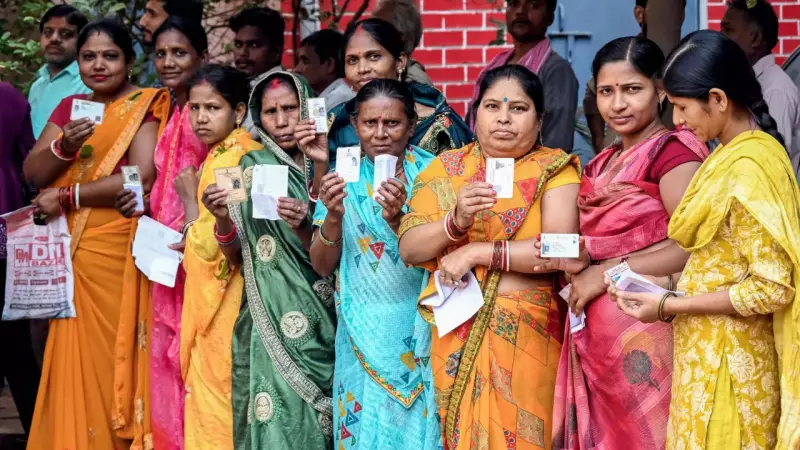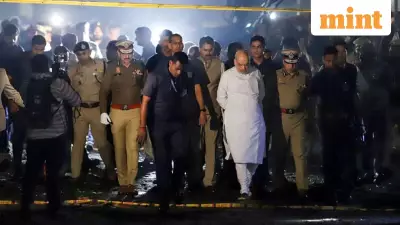
Bihar has witnessed an unprecedented democratic exercise as Phase 2 of the Assembly Elections 2025 concluded on Tuesday with a record-breaking voter turnout of 68.52%. This remarkable participation has set a new benchmark in India's electoral history, surpassing all previous records since the first elections in 1951.
Historic Voter Participation Creates New Records
The electoral process across 122 constituencies, encompassing approximately 3.7 crore eligible voters, demonstrated the growing enthusiasm among Bihar's electorate. The turnout significantly exceeded the previous record of 65.09% registered during the first phase on November 6. Election officials reported that polling stations witnessed long queues throughout the day, indicating the possibility of even higher final numbers once all votes are counted.
Chief Election Commissioner Gyanesh Kumar expressed his admiration for the voters, stating they had "made history in independent India" by achieving the highest percentage of votes in all elections conducted since 1951. He particularly highlighted the extraordinary participation of women voters, who recorded an unprecedented 71% turnout, demonstrating their complete faith in the electoral process.
"These transparent and peaceful elections in Bihar have shown the whole of India a lesson. The Election Commission has always stood with its voters, stands with them, and will continue to do so," Kumar emphasized during his reaction to the record-breaking participation.
Regional Variations in Voter Turnout
The electoral landscape revealed interesting regional patterns, with Kishanganj district emerging as the standout performer. As the only Muslim-majority district in Bihar, Kishanganj recorded an impressive 76.26% voter turnout, leading all other districts in participation.
The neighboring districts also showed strong democratic engagement, with Katihar following closely at 75.23%, Purnea at 73.79%, Supaul at 70.69%, and Araria at 67.79%. Most of these high-performing districts are located along the Nepal border in Bihar's north-eastern Kosi–Seemanchal region, known for its flood-prone geography and significant minority population.
Southern Bihar districts also demonstrated substantial voter enthusiasm, with Jamui registering 67.81%, Gaya at 67.50%, and Kaimur at 67.22%. However, Nawada district recorded the lowest turnout at 57.31%, remaining the only district below the 60% mark until 5 PM.
Political Implications and Exit Poll Predictions
The second phase holds particular significance in determining Bihar's political future. Exit polls released after the voting concluded forecast a clear victory for the ruling NDA alliance. Pollsters predicted that the opposition Mahagathbandhan would struggle to challenge the ruling alliance's dominance, while Prashant Kishor's Jan Suraaj party was projected to secure only a handful of seats.
According to the combined "poll of polls," the NDA is poised to return to power comfortably with around 148 seats. The RJD-led Mahagathbandhan is expected to lag significantly behind with approximately 88 seats, with other smaller parties winning only a few remaining seats.
This phase represented a crucial test for the ruling NDA, as eight ministers from Chief Minister Nitish Kumar's cabinet contested in this round. The outcome will be pivotal for the alliance's stability and credibility. Meanwhile, the opposition INDIA bloc saw this phase as an opportunity to capitalize on anti-incumbency sentiments and the high concentration of Muslim voters in several constituencies.
The phase also carried major implications for the Congress party, which remains the second-largest partner in the INDIA bloc despite its diminished influence. Of the 19 seats Congress won in 2020, 12 were contested in this round, including those held by prominent leaders such as state chief Rajesh Kumar Ram and Shakeel Ahmed Khan.
Adding another layer of intrigue to the electoral battle was Prashant Kishor's Jan Suraaj Party, seen as a potential disruptor in the traditional NDA–INDIA rivalry. Kishor has argued that the surge in voter turnout reflects growing public appetite for an "alternative" political force.
Conducted under tight security arrangements across 122 constituencies, the second phase will not only determine the fate of key ministers but could also signal broader shifts in Bihar's political landscape as the state awaits the final results.





